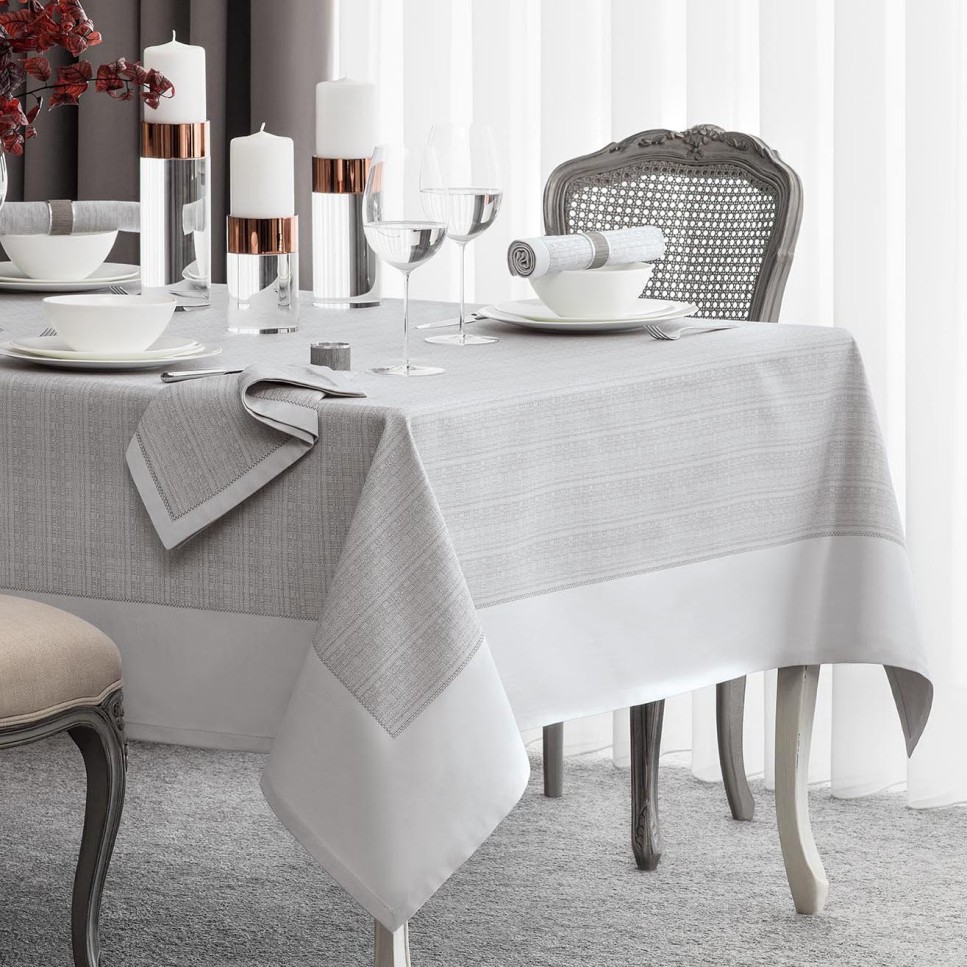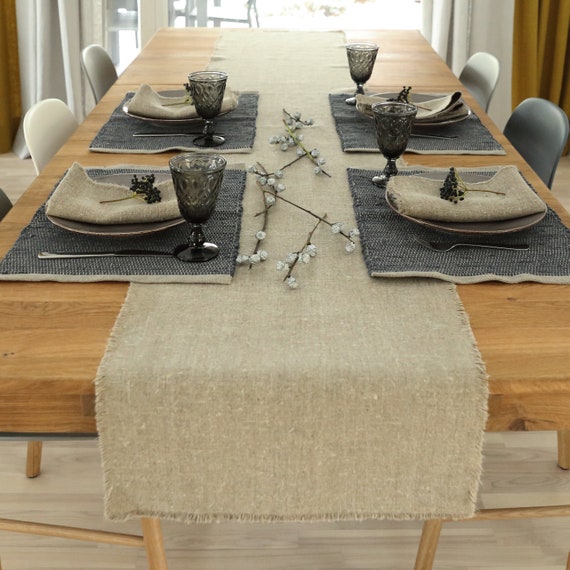Innovative Table Runner Utilizes: Beyond the Table
Innovative Table Runner Utilizes: Beyond the Table
Blog Article
Linen Textile Advancements: Checking Out Modern Trends and Creative Applications in Design and Textile Industry
From sustainable manufacturing approaches to innovative weaving technologies, the evolution of linen is reshaping the landscape of the textile industry. As we dig right into the worlds of innovative design applications and the introduction of linen blends and crossbreed materials, a brand-new phase unravels in which linen's role in future fabric technologies takes center stage.
Sustainable Practices in Linen Production
Sustainable methods in linen production have become progressively vital in the fabric market's initiatives to lessen environmental effect and promote ethical sourcing methods. Linen, a natural fiber derived from the flax plant, offers a variety of advantages such as resilience, breathability, and biodegradability. However, traditional approaches of bed linen production can include significant water usage, chemical use, and energy-intensive procedures.
To address these obstacles, many textile makers are taking on sustainable techniques throughout the linen manufacturing procedure. This includes sourcing flax from organic ranches that avoid unsafe pesticides and chemicals, executing water-efficient retting strategies to essence fibers from the flax stalks, and utilizing environmentally friendly dyes and coatings. Furthermore, some companies are purchasing eco-friendly energy sources to power their production centers and minimizing waste through recycling and upcycling campaigns.
Technological Innovations in Bed Linen Weaving
With the expanding focus on sustainable practices in linen manufacturing, the textile sector is now observing a surge in technical developments specifically targeted at revolutionizing the art of bed linen weaving. These innovations are improving the way linen textiles are created, supplying enhanced performance, quality, and creativity in weaving techniques.
Among the crucial technical advancements in linen weaving is the combination of electronic looms. These innovative looms are geared up with software program that allows for complex and intricate styles to be woven with accuracy. By digitizing the weaving procedure, producers can accomplish better consistency and accuracy in their linen textiles.
Furthermore, improvements in thread spinning technology have actually made it possible for the manufacturing of finer and even more durable linen yarns - table cloths. This causes softer and smoother bed linen fabrics that keep their high quality also after numerous usages and cleans
Furthermore, the advancement of environmentally friendly dyeing procedures and coatings for linen materials is obtaining grip. These sustainable methods not only decrease the ecological influence yet additionally satisfy the enhancing consumer demand for fairly created fabrics.
Creative Style Applications for Bed Linen
Ingenious artistic approaches are significantly forming the creative design applications for linen in the textile market. Linen's all-natural aesthetic appeal and capacity to mix with other fabrics make it a favored choice for producing one-of-a-kind garments and accessories that provide to the environmentally conscious customer.
Furthermore, designers are trying out linen in home decor, using its resilient and breathable nature to craft stylish home furnishings such as curtains, bed linens, and upholstery. The texture and drape of bed linen bring a sense of class and comfort to indoor areas, including a touch of sophistication to modern homes.

Linen Blends and Hybrid Fabrics

Crossbreed textiles, on the various other hand, take the principle of blending a step even more by integrating extra aspects such as metal strings, recycled products, or conductive fibers. These cutting-edge fabrics not just increase the layout opportunities yet additionally present useful facets like conductivity, antimicrobial residential or commercial properties, or improved Discover More toughness. Crossbreed materials are progressively being used in different markets, including fashion, interior design, and technical fabrics, where the need for multifunctional products gets on the increase.
Linen's Role in Future Textile Innovations

In the realm of future textile advancements, bed linen is anticipated to be a principal in the advancement of sophisticated practical materials. Scientists and developers are checking out methods to improve bed linen's intrinsic high qualities with technical innovations, such as including clever fabrics, nanotechnology, and efficiency coatings. These advancements intend to raise linen's performance attributes, making it suitable for a broader series of applications, from activewear to protective clothing.
Moreover, the mix of bed linen with various other natural or synthetic fibers opens up countless opportunities for producing novel textiles with unique properties and capabilities. By leveraging bed linen's qualities and exploring innovative blends, the fabric market is poised to present amazing advancements that satisfy More Help advancing customer requirements and sustainability requirements.
Verdict
To conclude, the exploration of lasting methods, technological innovations, innovative design applications, bed linen blends, and its function in future textile technologies highlight the constant evolution of bed linen material in the modern-day style and textile sector. With a focus on technology and imagination, the versatility and green nature of linen make it a beneficial material for producers and developers alike, paving the means for further growths and developments in the area of textiles.
As we dive into the worlds of creative style applications and the emergence of linen blends and crossbreed fabrics, a brand-new chapter unfolds in which bed linen's role in future fabric innovations takes center phase.
Exploring the combination of bed linen with other textiles has led to the development of cutting-edge blends and hybrid textiles in the modern textile market. Bed linen blends offer a special mix of the characteristics of linen with those of various other fibers, resulting in fabrics that possess improved properties such as enhanced longevity, improved draping, and decreased wrinkling.The advancement of bed linen blends and hybrid fabrics has established the phase for Bed linen to play a pivotal function in driving future fabric technologies.In the world of future textile developments, linen is anticipated to be a crucial gamer in the growth of advanced functional materials.
Report this page